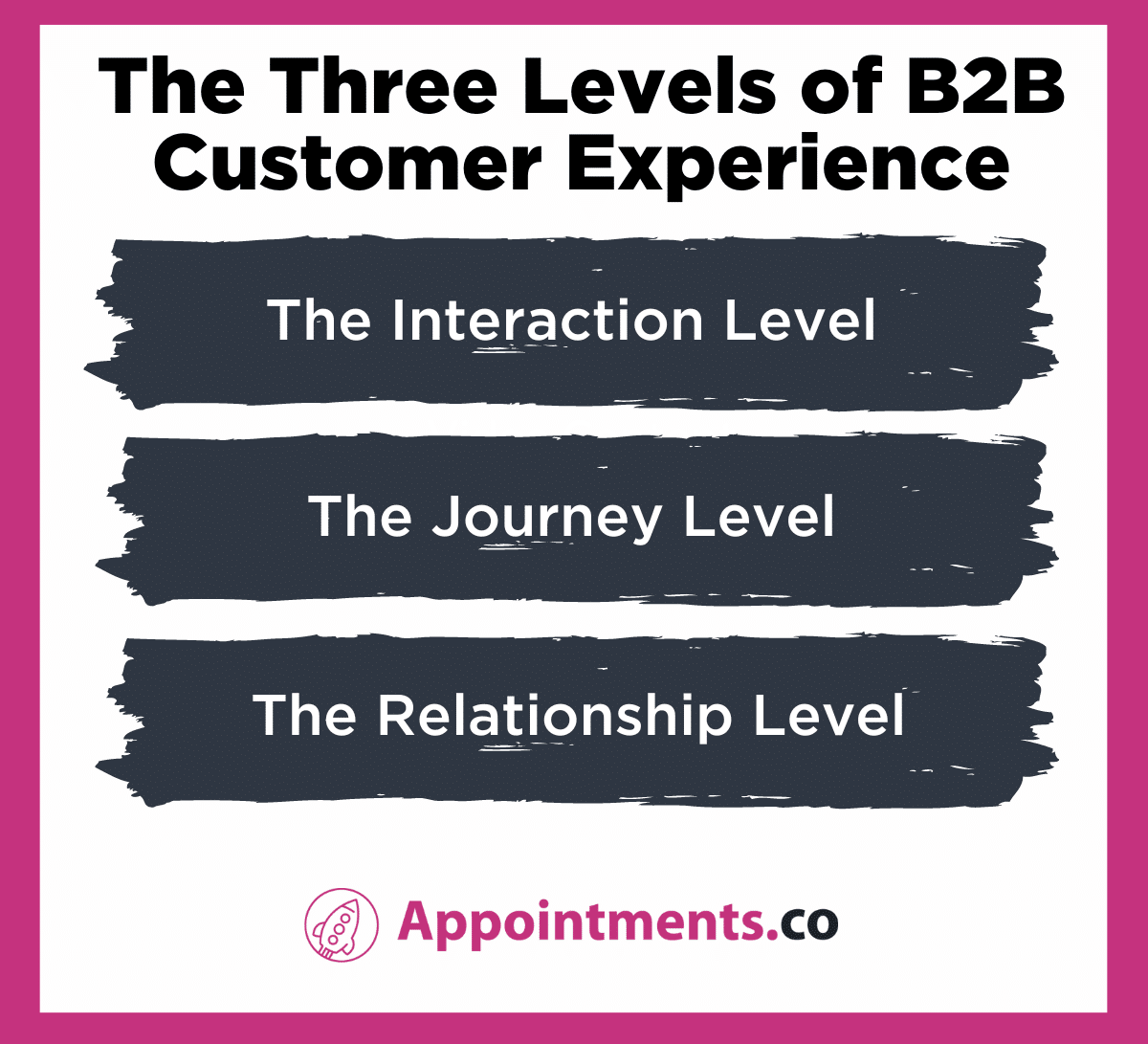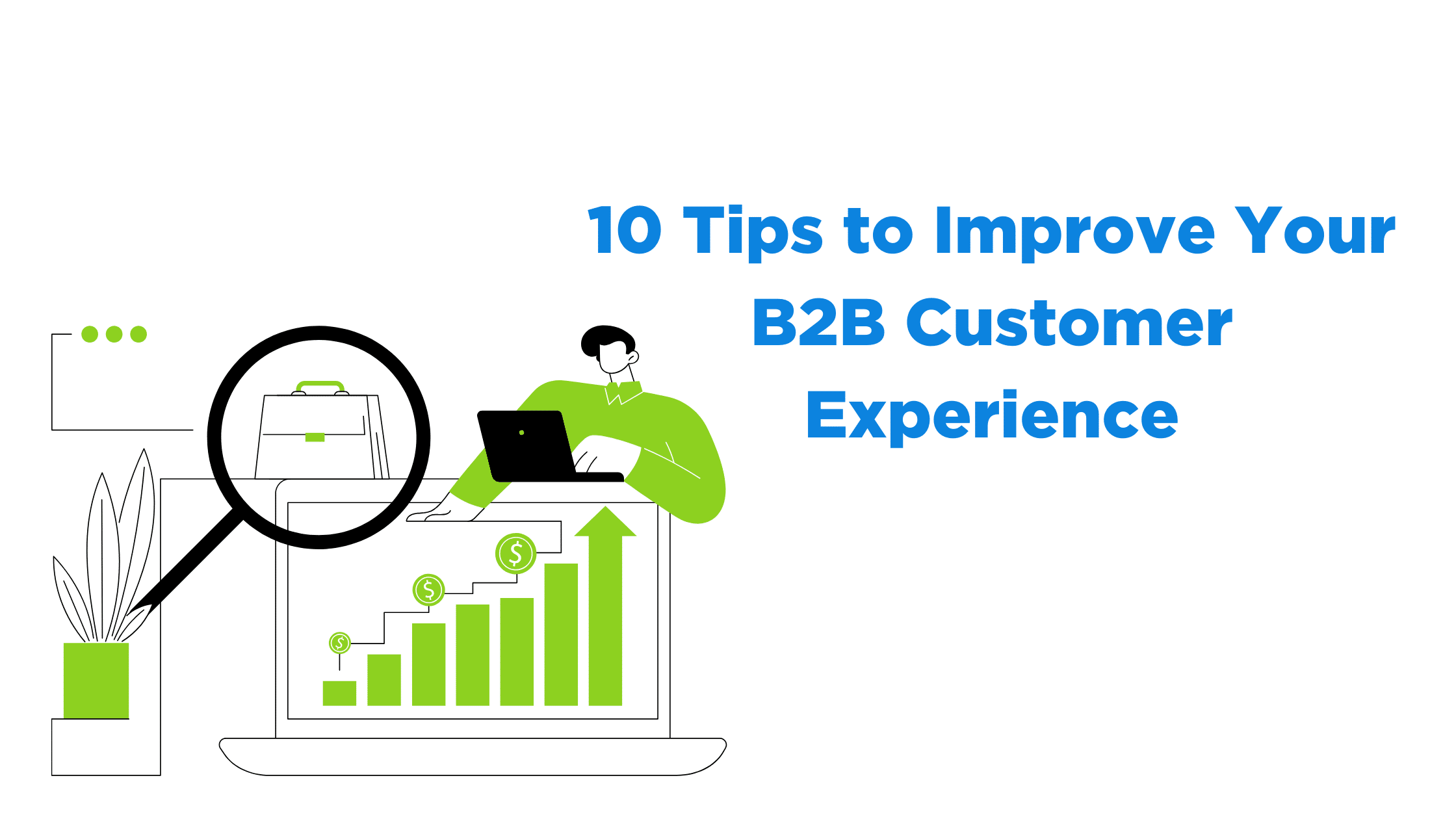The B2B customer experience is a measure to describe how happy your B2B customers are with your service.
Being a business professional, do you prefer something that is more tedious to handle, or less? After hiring a service to enhance their business, no owner wants to waste their time on a complicated service. And that too, when it comes to B2B customers, their expectations are not as simple as others. An analysis says that 86% of B2B customers are willing to pay more if their expectations of a high-quality customer experience are met. Don’t you feel that overlooking the B2B customer experience can take a toll on your business?
This article aims to take you on a tour of the B2B customer experience and list out a few ways to ensure a quality experience for your clients.
Table of Contents
- What is the B2B Customer Experience
- Three Levels in B2B Customer Experience
- The Difference Between the B2B and the B2C Customer Experience
- 10 Tips To Improve Your B2B Customer Experience
- Closing Thoughts
- Frequently Asked Questions
- Related Reads
What Is B2B Customer Experience?
B2B customer experience is the experience of B2B buyers and decision-makers as they interact with the providers of B2B goods and services. The B2B customer experience is a big business and is set to become bigger.
Customer experience is defined by the customer interaction and experiences of the product or service that your customer has with your business. It is important because a positive customer experience with a business is more likely to repeat, and they become a loyal customer of that business.
The Three Levels of B2B Customer Experience

1. The Interaction Level
The interaction level is the stage where the business engages with its customers by knowing their expectations of the product or services. This interaction level is the first instance where you get to secure a place in your customer’s mind and heart. Engage your prospects in a smooth conversation in the first place. This can take you a step closer to converting them into your customers.
For example, your first interaction with your prospects might occur through any mode. Sometimes, your leads might take the first step to find out about your service through social media posts or blogs. You might also try initiating a conversation with them through emails or phone calls. Whatever the case, keep your prospects at ease and comfort to win their attention.
2. The Journey Level
The journey level helps to map out the stage where the customer stands in the customer journey map. Once your prospects move a step forward, you must focus on engaging them throughout their buyer journey. Your customers might get stuck midway through making a purchase. Engaging them during this scenario will urge them to buy the product they wish.
For example: Say you own an e-commerce store. At times, your customers may not find the product they are expecting. This is when your sales team must try their best to route them to their expected product or convince them to have a look at other products. Make sure your approach doesn’t look to sales. Though the experience they had didn’t push them to buy your products, your service is remembered.
3. The Relationship Level
The relationship level helps to maintain the relationship with the customer by providing them with feedback and follow-up options. Even if you get them on your side, you can keep them engaged to retain them as your repeat buyers. Addressing the needs of your clients at the right time is the best way to convert them into customers. But, if you didn’t succeed in ensuring a quality experience, this can considerably reduce the chance of them coming back to you.
For example: Let’s consider a prospect who agreed on collaborating with your service. This doesn’t mean your work as a marketer is done. You can send them follow-up emails expressing your excitement to work with them or give them a brief on how we would help. Also, make sure, it doesn’t end up in the spam folder.
The Difference between B2C and B2B Customer Experience
B2C is between the business, and the end consumer sharing their experience with the business. Businesses aim to have a competitive advantage over other businesses. Customer feedback helps to rate their customer experience for the product or service provided by the business.
B2B is between business to business. The business provides its product or services to other businesses. B2B sells the products to resell, use them directly, or incorporate this into other products. B2C sells the product or services directly to the end consumer.
10 Tips To Improve Your B2B Customer Experience

1. Customer-Centric Vision
The providers of products or services must have a customer-centric vision to enhance the quality. The customer-centric approach ensures that the customer is at the center of the business’s philosophy, operations, and ideas. They must have the views of the customers when the end user customer uses their product or services. The customer-centric vision can be derived from testing the product or services before launching them into the business market.
Customer-centric culture prioritizes customer experience strategies for creating a positive experience for customers through communications, products, and services. Brand loyalty is often a result of these programs.
2. Engage with Customers
Engage with customers for customer journeys throughout their interactions and relationships with the brand.
Cross-referencing the journey with customer experience can help the business understand where the issues and opportunities lie.
3. Manage Customer Experience
Use customer experience management techniques to improve the customer experience, giving a vision for future customer experiences. 74% of consumers are at least somewhat likely to buy based on experiences alone, customer experience that satisfies customers leads to reduced churn. Managing these customer experiences helps to retain customers, and have a clear understanding of the customer there, which encourages brand loyalty.
It is important to make sure to manage employee satisfaction to understand the way to interact with the customer. Provide employee training that helps the employee carry out good services through the entire customer experience process.
4. Build Relationships
Building a relationship with the customer is important because it helps in the customer journey, and helps businesses improve their interaction with the customer. Customer relationships improve the flow of communication, as well as networking.
5. Personalization
Where the experience adapts based on what you want to know about the customer. This process makes the customer journey smoother and builds the relationship between the customer and the brand. You can set up the content that you see on the website from the user profile. This customer data helps the business to identify customer needs and enhances customer satisfaction.
6. Monitor Customer Experience Metrics
Monitor customer experience metrics from the latest research to make new insights on how to improve the customer experience for building lasting relationships.
From chatbots to natural language processing, there are many customer service technologies that allow businesses to understand what people actually mean in free-form text messages, the latest technology has made time for insight faster, and new levels of personalization are affordable for many businesses. Explore possibilities with artificial intelligence and machine learning tools that are designed for experience management.
7. Improve Quality
Customers expect their product or service to be availed with the best quality. Businesses must focus on the quality of the products or services they deliver to the customer. 86% of consumers would leave a brand after as few as two poor experiences. The opinion of the customer matters and businesses must aim to produce better quality products and services to their customers according to their needs. The process of meeting customer needs improves customer loyalty to the brand.
8. Surveys
Surveys are extremely powerful when they are expressed in the customer’s own way. Technology has provided a way to take on open-text surveys and analyze them at scale. Businesses can now understand the thoughts and sentiments from the customer’s point of view. Having an ideal one-on-one session conversation with every customer, asking everyone what they think of the brand, and listening to their answer is nearly impossible.
For B2B customer experience, services like appointment setters can use these types of methods to learn the customer’s thoughts on their services and can find solutions for customer satisfaction.
9. Feedback
Creating feedback forms gives insights from customers, and helps you to understand the end users’ needs. This can help you create better products, as well as attract and retain customers. This is crucial for the success of a customer-centric experience.
Customer feedback can be taken from surveys, oral, and written. The measures are taken from the feedback help to improve overall customer satisfaction by determining how happy their customers are with the company’s products and services. These ratings through feedback can help the company to determine how to best improve, or change its product or services according to the customer’s needs.
10. Follow-up
Follow up with the customer to find out their perspective about the product or services you have offered. Negative reviews can be resolved by the brand once they understand the real problems faced by the customers using their product or services. 95% of all converted leads are reached by follow up, These follow-ups are crucial for the brand to improve its customer experiences as the businesses can use these processes until the problem is resolved.
Respond to a customer regarding any type of issues they had while using your product or services. Customers must never feel ignored, and you should always respond to issues promptly. A positive customer experience comes when the customers feel happy with the product or services delivered.
Closing Thoughts
A B2B customer experience means that the marketing tools are designed for companies to use rather than consumers.
B2B buyers are questioned by the company if there is any deviation from what they expect from the product or services they offer. These buyers are responsible for spending their company’s money wisely on the product or service that can help the buyer to increase their efficiency and revenue.
The B2B buyers are often called in multiple directions and appreciate those businesses that can simply the offerings of what matters the most. Taking advantage of technology like automation, artificial intelligence, and machine learning not only helps to create more customer experience but also gives a competitive advantage in the market.
Understanding these unique buyers’ needs and pressure, the product or service offering should meet the expectation of the buyer. The seller must take this customer data about the industry the customer works in, the geographical locations that they focus on, and where they are on the customer journey map. Without this understanding, businesses can not deliver successful customer experiences.
Frequently Asked Questions
1. What is a positive customer experience?
Customer experience is the sum of customers’ experiences with a brand. A positive consumer experience happens when the customer perceives their interactions with the brand as memorable and worthwhile.
2. What is implementing the voice of the customer programs?
The voice of the customer is feedback about the customer’s experience with the brand and their expectations of the product or services. This focuses on the end user’s needs, expectations, understanding, and product improvement.
3. What are the three levels of customer experience?
The three levels of customer experience are the interaction level, journey level, and relationship levels.
4. What is B2B customer journey mapping?
A B2B customer journey map provides a strategic overview of the customer journey, where customers interact and engage with the company at each stage of the journey. A good customer journey includes all the touchpoints where the customer interacts with the brand.
Related Posts
- Outbound Prospecting -10 Tips to Improve Sales
- Customer Retention Strategies that Will Blow Your Mind – 10 Hacks
Illustrations by Storyset



